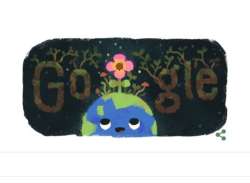Spring Equinox 2019: Google marks the beginning of spring with an adorable Doodle
Google on Wednesday celebrated the spring equinox with an animated doodle of a flower on the surface of the earth. The Spring Equinox doodle's reach extended to all of Europe, Asia and North America, including India.

Google on Wednesday celebrated the spring equinox with an animated doodle of a flower on the surface of the earth. The Spring Equinox doodle's reach extended to all of Europe, Asia and North America, including India, almost all of the Northern Hemisphere, where it is the first day of the season on Thursday. India will welcome the equinox (Latin for equal day and night), when it will be Holi, the festival of colours.
Almost everywhere in the world, night-time and daytime will be 12 hours long. Equinox is used to mark the change of seasons, as the balance of light shifts to make days longer than nights. It marks the end of the winter season and informs people about the arrival of warmer days. There are two equinoxes each year, in March and September. The March equinox marks the moment the sun crosses the imaginary equator from south to north and vice versa in September.
The March equinox is often used by astronomers to measure a tropical year -- the mean time it takes for the Earth to complete a single orbit around the sun.
Also, at 3:45 p.m. ET (19:45 UT) on March 19, the moon will be a mere 223,309 miles away from our planet, making for an especially close perigee. According to astronomy website EarthSky.org, a full moon has not landed this close to the first day of spring since the year 2000, and the two celestial events won’t happen less than a day apart again until 2030. This year the supermoon will take place on the spring equinox.
Then, at 9:43 p.m. ET on March 20 (1:43 UT on March 21), the moon will officially reach its full phase. As a result of these combined events, the full lunar disk will appear 14 percent larger and 12 percent brighter than usual—a spectacle widely known as a supermoon.
(With IANS inputs)